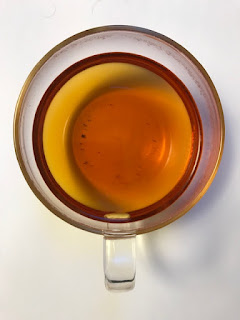Tokuya Yamazaki was born in 1983 on the Kamo Shizen Noen farm in Kyoto, in a small town called Kamo, on the border with Nara. When he was a young man he developed stomachaches and trembling in hand and feet, and doctors did not only seem to be capable of helping him but could not source the symptoms and find a reason why he had them. They peaked every summer (when the use of pesticides is at its highest) and when he took over the farm they increased, with backaches and temporary loss of sight. When he started his own research it struck him that he was not the only one in the area and that the symptoms were those that came with Dioxin poisoning, a substance that was part of the herbicides he used. He stopped the use of fertilizers, pesticides and herbicides in his gardens and picked up sports to rebuild his body, but soon found out that his tea gardens had become too dependent on the use of them and almost died when he took the chemicals away. He went at it in a slower rythm, starting with the fertilizers, and by today all his tea gardens have revived and are 100% organic.
One of Tokuya Yamazaki's tea gardens (picture The Tea Crane)
Working this way, a farmer needs to be closer to his tea gardens and see them as living creatures. Some of them are very young and active, some of them are old and have to be treated with patience and respect. This one has a surface of 10a and is called Higashiyama Shozai. It is north facing, at a height of 140m above sea level and the tea bushes are very old (nobody remembers exactly how old). As a consequence this is not a plantation of a single cultivar, but the DNA of each tea bush will be slightly different. The leaf is large and coarse, an advantage for wakocha.
Tokuya's Native Wild Wakocha 2017, The Tea Crane:
12.68 euro for 30 gram (42 for 100). Released in 2019 but harvested on 25 July 2017. Aged Tea. The oldest tea bushes are not harvested every year as they need time to recover. The solitary plot is surrounded by mountain forests and sunlight arrivés only later in the morning. Withered for four days followed by strong kneading to induce oxydation.
23 august 2019, 3 gram, 2 mins, 150ml, 98°C, in a kyusu. The dry leaves look like hojicha, or like very dry woodcuttings, they have a peppery smell and are quite sharp. The wet leaves smell timid but fruity, also a bit sharp, and there is a trace of forest and a bit of mushroom. The infusion is light brown with hints of orange and dust particles. High fruity tone for the infusion. The taste is soft, fresh and with a very clear and nice fruit tone that developes after a few seconds with a nice acidity and fruit-sugar elements. Nice vibrant aftertaste. No mushroom, but something creamy. Delicious tea but a bit unusual.
😊😊😊😊
It is a great joy to discover teas like this, but they are not easy to find in normal teastores, and production is very limited. Hunting for them is an absolute pleasure, but you need partners in this, teamerchants who are able to source these teas and know what they are doing. Tyas Sosen is one of these and his website is full of teas with a history and lots of character. This particular tea is sold out, but others from the same farmer are still available, and as we expect international flights to pick up again in the near future they can be reordered again. You can follow Tyas on his Facebook, The Tea Crane. This is the adress of his website (full of nice tea stories): https://www.the-tea-crane.com/

































